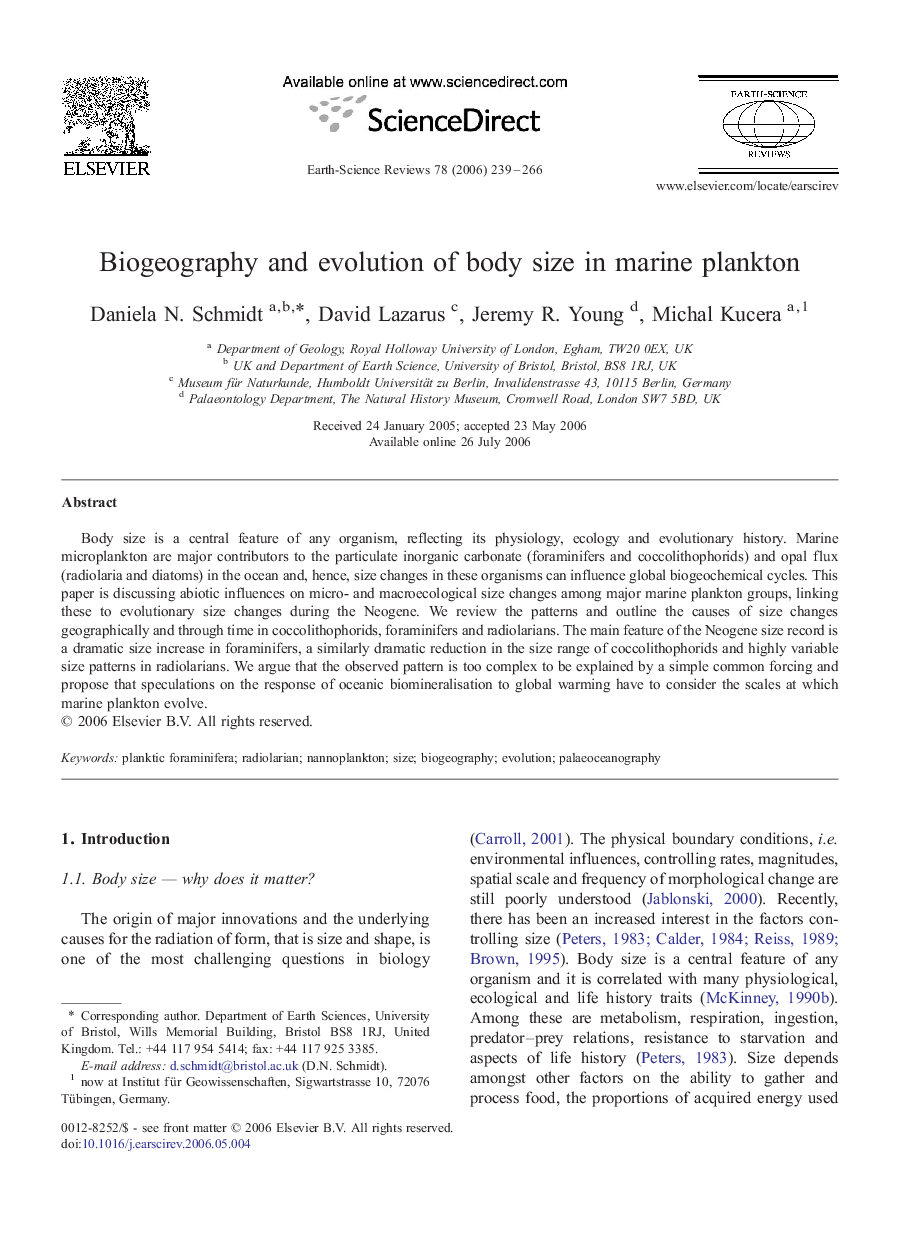| Article ID | Journal | Published Year | Pages | File Type |
|---|---|---|---|---|
| 4726456 | Earth-Science Reviews | 2006 | 28 Pages |
Body size is a central feature of any organism, reflecting its physiology, ecology and evolutionary history. Marine microplankton are major contributors to the particulate inorganic carbonate (foraminifers and coccolithophorids) and opal flux (radiolaria and diatoms) in the ocean and, hence, size changes in these organisms can influence global biogeochemical cycles. This paper is discussing abiotic influences on micro- and macroecological size changes among major marine plankton groups, linking these to evolutionary size changes during the Neogene. We review the patterns and outline the causes of size changes geographically and through time in coccolithophorids, foraminifers and radiolarians. The main feature of the Neogene size record is a dramatic size increase in foraminifers, a similarly dramatic reduction in the size range of coccolithophorids and highly variable size patterns in radiolarians. We argue that the observed pattern is too complex to be explained by a simple common forcing and propose that speculations on the response of oceanic biomineralisation to global warming have to consider the scales at which marine plankton evolve.
